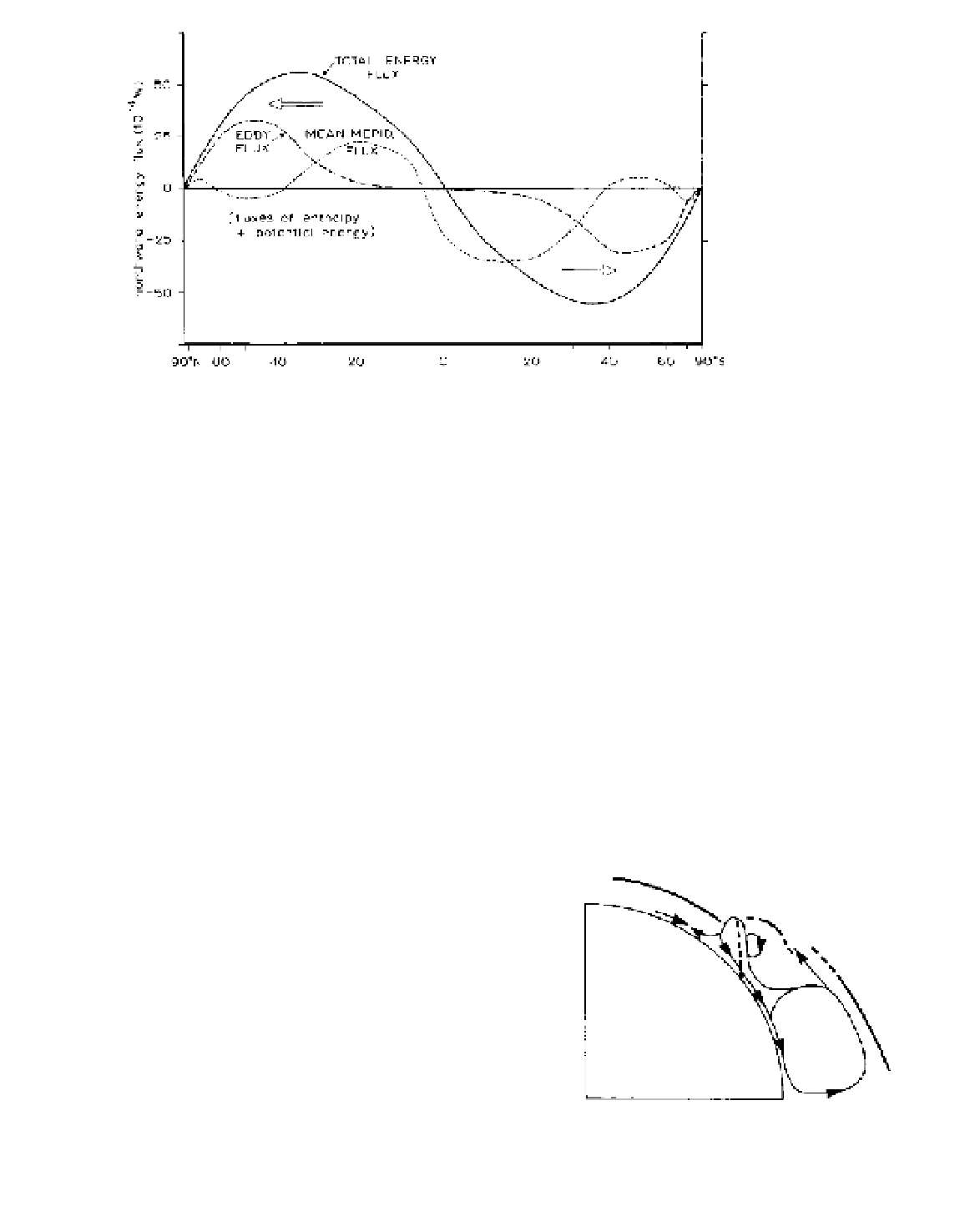Geoscience Reference
In-Depth Information
Figure 7.19
The poleward transport
of energy, showing the importance of
horizontal eddies in mid-latitudes.
transporting heat and momentum - by horizontal
circulations - had been suggested in the 1920s by A.
Defant and H. Jeffreys but could not be tested until
adequate upper-air data became available. Calculations
for the northern hemisphere by V. P. Starr and R. M.
White at the Massachusetts Institute of Technology
showed that in middle latitudes horizontal cells transport
most of the required heat and momentum polewards.
This operates through the mechanism of the quasi-
stationary highs and the travelling highs and lows near
the surface acting in conjunction with their related wave
patterns aloft. The importance of such horizontal eddies
for energy transport is shown in Figure 7.19 (see also
Figure 3.27). The modern concept of the general
circulation therefore views the energy of the zonal
winds as being derived from travelling waves, not from
meridional circulations. In lower latitudes, however,
eddy transports are insufficient to account for the total
energy transport required for energy balance. For this
reason the mean Hadley cell is a feature of current
representations of the general circulation, as shown in
Figure 7.20. The low-latitude circulation is recognized
as being complex. In particular, vertical heat transport
in the Hadley cell is effected by giant cumulonimbus
clouds in disturbance systems associated with the equa-
torial trough (of low pressure), which is located on
average at 5°S in January and at 10°N in July (see Figure
11.1). The Hadley cell of the winter hemisphere is by far
the most important, since it gives rise to low-level
transequatorial flow into the summer hemisphere. The
traditional model of global circulation with twin cells,
symmetrical about the equator, is found only in spring/
autumn.
Longitudinally, the Hadley cells are linked with
the monsoon regimes of the summer hemisphere. Rising
air over South Asia (and also South America and
Indonesia) is associated with east-west (zonal) outflow,
and these systems are known as
Walker circulations
(pp.
145-6). The poleward return transport of the meridional
Hadley cells takes place in troughs that extend into low
latitudes from the mid-latitude westerlies. This tends
to occur at the western ends of the upper tropospheric
subtropical high-pressure cells. Horizontal mixing
predominates in middle and high latitudes, although it
is also thought that there is a weak indirect mid-latitude
cell in much reduced form (Figure 7.20). The relation-
ship of the jet streams to regions of steep meridional
temperature gradient has already been noted (see
Figure 7.7). A complete explanation of the two wind
maxima and their role in the general circulation is still
ARCTIC
TROPOPAUSE
North
Pole
Polar front
jet
J
60˚
Subtropical
jet
Polar
front
J
TROPICAL
TROPOPAUSE
30˚
Figure 7.20
General meridional circulation model for the
northern hemisphere in winter.
Source
: After Palmén (1951); from Barry (1967).

